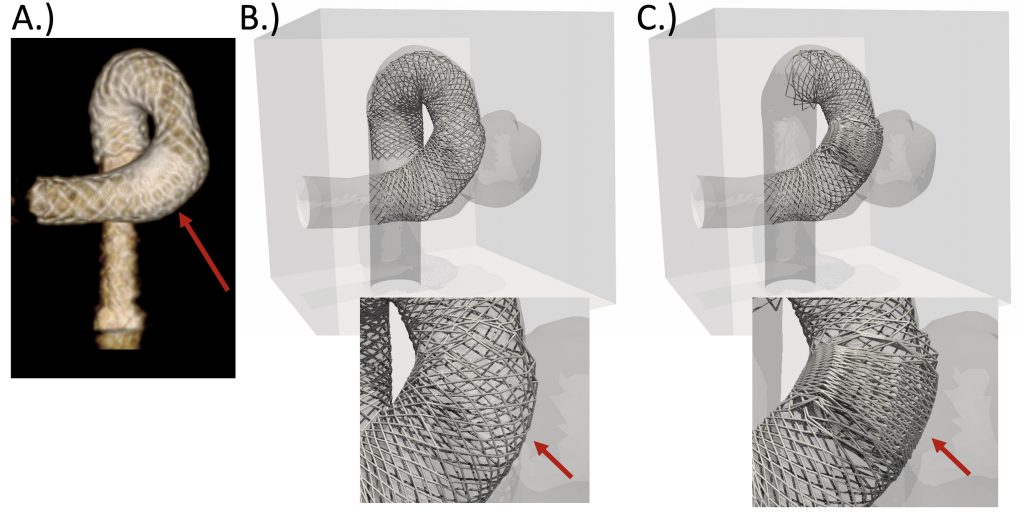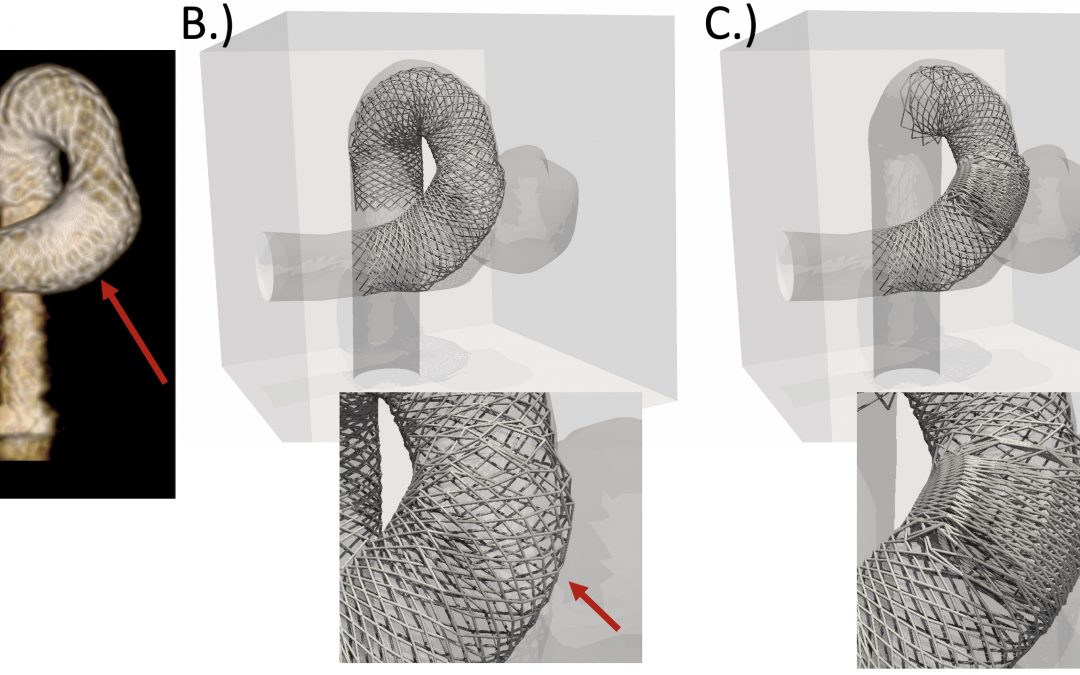Gabor Zavodszky et al. published a new paper in Numerical Methods in Biomedical Engineering.

Virtual flow diverter deployment techniques underwent significant development during the last couple of years. Each existing technique displays advantageous features, as well as significant limitations. One common drawback is the lack of quantitative validation of the mechanics of the device. In the following work we present a new spring‐mass‐based method with validated mechanical responses that combines many of the useful capabilities of previous techniques. The structure of the virtual braids naturally incorporates the axial length changes as a function of the local expansion diameter. The force response of the model was calibrated using the measured response of real FDs. The mechanics of the model allows to replicate the expansion process during deployment, including additional effects such as the push‐pull technique that is required for the deployment of braided FD‐s to achieve full opening and proper wall apposition. Furthermore, it is a computationally highly efficient solution that requires little pre‐processing and has a run‐time of a few seconds on a general laptop and thus allows for exploratory analyses. The model was applied in a patient‐specific geometry, where corresponding accurate control measurements in a 3D‐printed model were also available. The analysis shows the effects of FD oversizing and push‐pull application on the radial expansion, surface density, and on the wall contact pressure.
For further details please see: https://onlinelibrary.wiley.com/doi/abs/10.1002/cnm.3340

